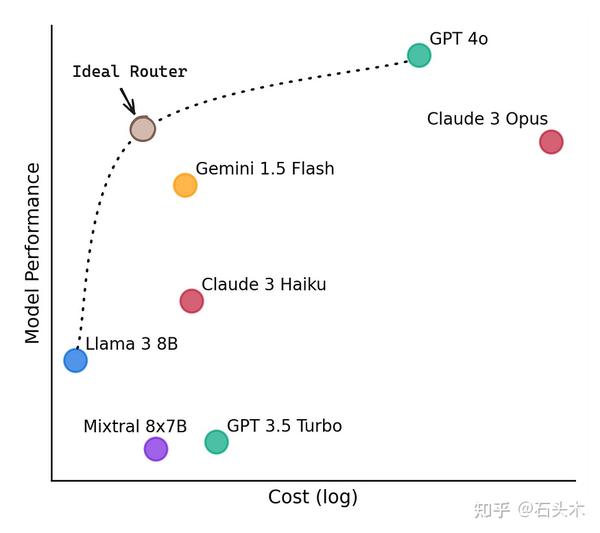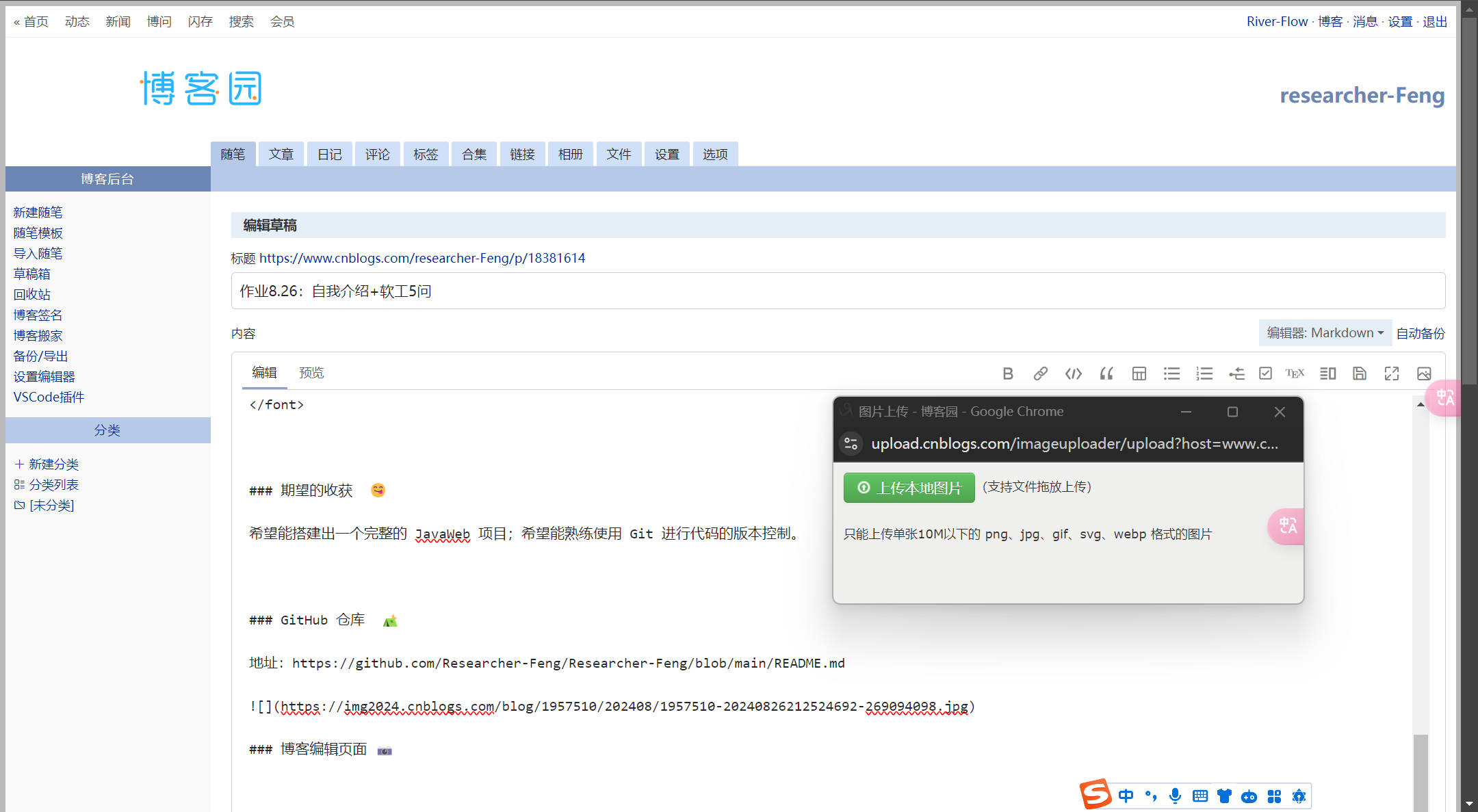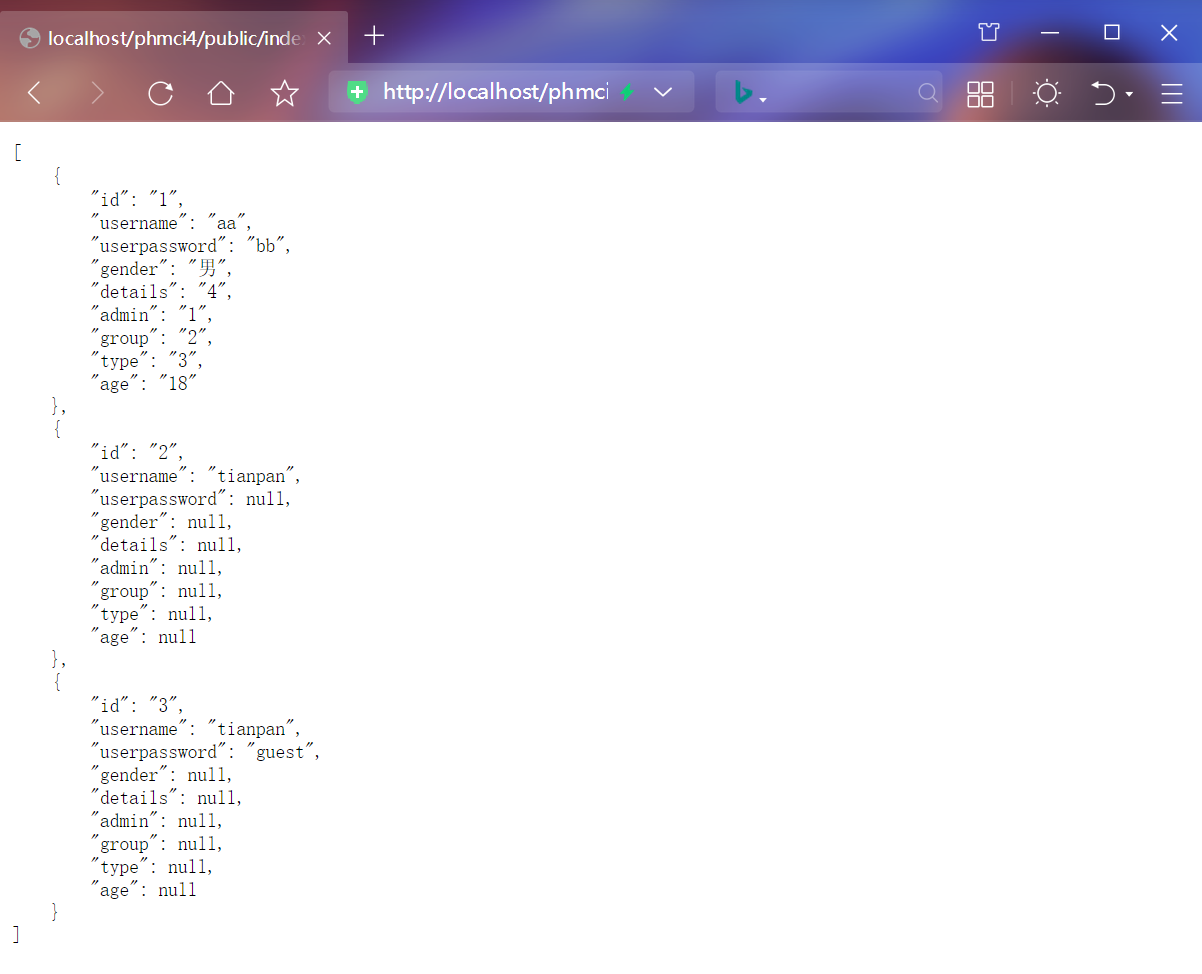1 前言
SpringBoot 它给我们留了很多的扩展点,这节我们就看看都有哪些(有的扩展点是基于 Spring 的,有的我就不具体强调到底是 SpringBoot 还是 Spring 的噢)。
另外每一种扩展点我们都从两个方面来看:
入口时机:入口就是 SpringBoot 解析或者寻找你自定义的类的时机
执行时机:就是 SpringBoot 执行的时机
2 ApplicationContextInitializer
位于spring-context包中的:
public interface ApplicationContextInitializer<C extends ConfigurableApplicationContext> {/*** Initialize the given application context.* @param applicationContext the application to configure*/void initialize(C applicationContext); }
2.1 入口时机
它的入口时机是在 SpringApplication 的实例化方法中:
public SpringApplication(ResourceLoader resourceLoader, Class<?>... primarySources) {...// 加载所有的初始化器setInitializers((Collection) getSpringFactoriesInstances(ApplicationContextInitializer.class));... }
原理:通过 SpringFactoriesLoader 加载文件 META-INF/spring.factories 中 ApplicationContextInitializer 类型
2.2 执行时机
执行时机是在 SpringApplication 的 run 方法中的准备上下文 prepareContext 里:
private void prepareContext(ConfigurableApplicationContext context, ConfigurableEnvironment environment,SpringApplicationRunListeners listeners, ApplicationArguments applicationArguments, Banner printedBanner) {...// 执行初始化 applyInitializers(context);... } protected void applyInitializers(ConfigurableApplicationContext context) {// 遍历初始化器集合for (ApplicationContextInitializer initializer : getInitializers()) {// 检查是否可以被调用Class<?> requiredType = GenericTypeResolver.resolveTypeArgument(initializer.getClass(),ApplicationContextInitializer.class);Assert.isInstanceOf(requiredType, context, "Unable to call initializer.");// 执行每个初始化器 可以对上下文进行操作 initializer.initialize(context);} }
当有多个的话,是放到 List 容器中的,所以先放进来的先执行。
3 ApplicationListener
位于spring-context包中的:
public interface ApplicationListener<E extends ApplicationEvent> extends EventListener {/*** Handle an application event.* @param event the event to respond to*/void onApplicationEvent(E event); }
3.1 入口时机
入口时机我们这里看两种:
(1)定义在 META-INF/spring.factories
它的入口时机跟上边的一样的,也是在 SpringApplication 的实例化方法中:
public SpringApplication(ResourceLoader resourceLoader, Class<?>... primarySources) {...// 加载所有的监听器setListeners((Collection) getSpringFactoriesInstances(ApplicationListener.class));... }
原理:通过 SpringFactoriesLoader 加载文件 META-INF/spring.factories 中 ApplicationListener 类型
(2)EventListener 注解
@Target({ElementType.METHOD, ElementType.ANNOTATION_TYPE}) @Retention(RetentionPolicy.RUNTIME) @Documented public @interface EventListener {...}
可以看到这个注解是作用在方法上的,并且它的解析过程来源于,我这里就不一点点带大家看了,我画了个图:

首先是我们的注解类型的 ApplicationContext 在构造器中会注入注解相关的处理器,这里就会涉及到放置默认的 EventListenerFactory (它会给我们的方法封装一个 ApplicationListener 对象)、以及默认的 EventListenerMethodProcessor (它来解析我们的 Bean 中的 @EventListener 注解方法),两者搭配干活,最后通过 context 注入到监听器集合并且也会往广播器里放一份(广播器的初始化下边也会看一下)。
3.2 执行时机
它的执行是通过 ApplicationContext 发布事件来做的,发布事件里会获取到上下文中的广播器 ApplicationEventMulticaster,然后广播器里获取监听器列表,然后顺序执行(执行的时候有个小细节是广播器里有没有配线程池,有的话就提交到线程池里异步执行)。
那我们在看执行时机之前,可能得先看下:
(1)广播器的初始化
(2)监听器的注册或者来源(上边注解形式的我们已经能看到注册的过程,我们就看一下 spring.factories 中的监听器的注册)
3.2.1 广播器的初始化
广播器的初始化位于 Spring 的刷新方法中,有一个 initApplicationEventMulticaster 即初始化广播器方法,我们看看该方法:
// public static final String APPLICATION_EVENT_MULTICASTER_BEAN_NAME = "applicationEventMulticaster"; protected void initApplicationEventMulticaster() {// 获取 bean 工厂ConfigurableListableBeanFactory beanFactory = getBeanFactory();// 判断是否有用户自定义的广播器 applicationEventMulticasterif (beanFactory.containsLocalBean(APPLICATION_EVENT_MULTICASTER_BEAN_NAME)) {// 有的话就用 用户自定义的广播器(比如当你需要异步执行的时候,可以自己定义一个 Bean 设置下线程池)this.applicationEventMulticaster =beanFactory.getBean(APPLICATION_EVENT_MULTICASTER_BEAN_NAME, ApplicationEventMulticaster.class);if (logger.isTraceEnabled()) {logger.trace("Using ApplicationEventMulticaster [" + this.applicationEventMulticaster + "]");}}else {// 没有的话 就初始化一个默认的广播器 SimpleApplicationEventMulticaster 并交给 Bean 工厂管理this.applicationEventMulticaster = new SimpleApplicationEventMulticaster(beanFactory);beanFactory.registerSingleton(APPLICATION_EVENT_MULTICASTER_BEAN_NAME, this.applicationEventMulticaster);if (logger.isTraceEnabled()) {logger.trace("No '" + APPLICATION_EVENT_MULTICASTER_BEAN_NAME + "' bean, using " +"[" + this.applicationEventMulticaster.getClass().getSimpleName() + "]");}} }
广播器的类图如下,捎带了解一下:

3.2.2 监听器的注册
上边注解形式的我们已经能看到注册的过程,我们就看一下 spring.factories 中的监听器是什么放到广播器或者 ApplicationContext 中的,这个就涉及到下边的一个扩展点,大家可以先看一下下边的扩展点 SpringApplicationRunListener,SpringBoot 在 spring.factories 放置了一个 EventPublishingRunListener,

在他的实例化方法中, 这家伙还给自己内部定义了一个广播器,并且把 spring.factories 中的 ApplicationListener 监听器都放进来:
// private final SimpleApplicationEventMulticaster initialMulticaster; /*** @param application SpringApplication* @param args 启动参数*/ public EventPublishingRunListener(SpringApplication application, String[] args) {this.application = application;this.args = args;// 初始化一个默认的事件广播器this.initialMulticaster = new SimpleApplicationEventMulticaster();// 这里会把 SpringApplication 的监听器集合都放进广播器里for (ApplicationListener<?> listener : application.getListeners()) {this.initialMulticaster.addApplicationListener(listener);} }
那么它是什么时候,把监听器放到 ApplicationContext 中的呢?就在它的 contextLoaded 阶段:
@Override public void contextLoaded(ConfigurableApplicationContext context) {for (ApplicationListener<?> listener : this.application.getListeners()) {if (listener instanceof ApplicationContextAware) {((ApplicationContextAware) listener).setApplicationContext(context);}// 放到 ApplicationContext 中 context.addApplicationListener(listener);}// 通过默认的广播器来广播事件this.initialMulticaster.multicastEvent(new ApplicationPreparedEvent(this.application, this.args, context)); }
有没有有点小晕,EventPublishingRunListener 它也有广播器了,那跟 Spring 的广播器会不会多执行呢?其实不会,我们直接细看下:

看完上边两个,我们最后看下事件的发布过程,一般我们通过 ApplicationContext 进行发布,我这里直接画了个图,一起看下:

事件发布后,首先会统一把事件对象包装成 ApplicationEvent 类型,然后会判断 earlyApplicationEvents 属性是否为空,他的值的变化有两个触发点:
(1)在 Spring 刷新的时候,准备上下文的方法中,会首先对 earlyApplicationEvents 属性进行初始化,来保存一些提前发布的事件
(2)在刷新的后半段,会注册监听器,并注册到广播器里,然后把 earlyApplicationEvents 里边暂存的事件捞出来并把 earlyApplicationEvents 设置为空,然后交给广播器发布
最后到达广播器,里边有一个小细节就是线程池的设置(默认是没有的)所以默认都是同步执行的。
对于执行顺序,还是当监听器有多个的话,是放到 List 容器中的,所以先放进来的先执行。
3.3 事件 Event
那我们顺便看下 SpringBoot 中的一些常见事件:
首先是 EventPublishingRunListener 里边的 6个阶段 + 1个失败阶段涉及到的7个事件:
(1)ApplicationStartingEvent SpringBoot 开始启动阶段(run方法的最前段)
(2)ApplicationEnvironmentPreparedEvent SpringBoot 准备环境阶段
(3)ApplicationContextInitializedEvent SpringBoot 上下文初始化阶段(这个时候ApplicationContext刚实例化好,进行初始化阶段)
(4)ApplicationPreparedEvent SpringBoot 上下文就绪阶段(初始化好了)
(5)ApplicationStartedEvent SpringBoot 这时候上下文都刷新完了(就差 callRunners 没执行即 CommandLineRunner、ApplicationRunner没执行)
(6)ApplicationReadyEvent SpringBoot 服务启动完了开始跑了
(7)ApplicationFailedEvent 失败处理阶段
捎带再看一个:
WebServerInitializedEvent web容器初始化完毕事件 都是在 spring 刷新上下文的最后 finishRefresh 里发布的
它的两个子类:
ServletWebServerApplicationContext servlet容器型事件
ReactiveWebServerInitializedEvent 响应式容器事件
4 SpringApplicationRunListener
位于 SpringBoot 包里的:
public interface SpringApplicationRunListener {...6个阶段 }
4.1 入口时机
它的入口时机是在 SpringApplication 的 run 方法中的前一段:
public ConfigurableApplicationContext run(String... args) {...SpringApplicationRunListeners listeners = getRunListeners(args);// 监听器的执行 starting listeners.starting();... } private SpringApplicationRunListeners getRunListeners(String[] args) {Class<?>[] types = new Class<?>[] { SpringApplication.class, String[].class };// 也是通过该方法 getSpringFactoriesInstances 指定 SpringApplicationRunListener 类型来加载的return new SpringApplicationRunListeners(logger,getSpringFactoriesInstances(SpringApplicationRunListener.class, types, this, args)); }
SpringApplicationRunListeners 的内部的 listeners 就存放了所有的 SpringApplicationRunListener
原理:通过 SpringFactoriesLoader 加载文件 META-INF/spring.factories 中 SpringApplicationRunListener 类型
4.2 执行时机
执行时机的话,SpringApplicationRunListener 总共分6个阶段,外加一个失败的处理阶段(只有 starting、running 阶段不会执行失败处理,其他5个都会执行失败处理),并且失败处理不分,
比如有三个监听器 A、B、C,假如A、B执行成功,C执行失败的话,执行 failed 处理,A、B、C 三个都会执行,并不是只有 C 执行。
它的执行阶段几个时机,大家直接看图,清晰明了:

当有多个的话,是放到 List 容器中的,所以先放进来的先执行。
5 SpringBootExceptionReporter
位于 SpringBoot 包里的:
public interface SpringBootExceptionReporter {/*** Report a startup failure to the user.* @param failure the source failure* @return {@code true} if the failure was reported or {@code false} if default* reporting should occur.*/boolean reportException(Throwable failure); }
因为它的入口和执行衔接挺快,我们就一起看:
5.1 入口以及执行时机
public ConfigurableApplicationContext run(String... args) {...Collection<SpringBootExceptionReporter> exceptionReporters = new ArrayList<>();try {// 创建上下文context = createApplicationContext();// 入口时机:加载异常解析报告类exceptionReporters = getSpringFactoriesInstances(SpringBootExceptionReporter.class,new Class[] { ConfigurableApplicationContext.class }, context);...}catch (Throwable ex) {// 执行时机1:失败处理 exceptionReporters handleRunFailure(context, ex, exceptionReporters, listeners);throw new IllegalStateException(ex);}try {listeners.running(context);}catch (Throwable ex) {// 执行时机2:失败处理 exceptionReportershandleRunFailure(context, ex, exceptionReporters, null);throw new IllegalStateException(ex);}return context; }
再看看失败处理:
private void handleRunFailure(ConfigurableApplicationContext context, Throwable exception,Collection<SpringBootExceptionReporter> exceptionReporters, SpringApplicationRunListeners listeners) {try {try {...}finally {reportFailure(exceptionReporters, exception);...}}catch (Exception ex) {logger.warn("Unable to close ApplicationContext", ex);}... } private void reportFailure(Collection<SpringBootExceptionReporter> exceptionReporters, Throwable failure) {try {// 遍历执行 中间有一个抛错或者 reportException 返回 false 后边就不执行了for (SpringBootExceptionReporter reporter : exceptionReporters) {if (reporter.reportException(failure)) {registerLoggedException(failure);return;}}}... }
当有多个的话,是放到 List 容器中的,所以先放进来的先执行。
6 PostProcessor
在 Spring 中,存在多种类型的 PostProcessor,它们主要用于在 Spring 容器初始化bean的过程中提供扩展点。这块可是一个大块,硬骨头,启动过程中很多都是依赖后置处理器来完成的。
6.1 BeanFactoryPostProcessor
它主要是在 BeanFactory 加载 Bean 定义之后、实例化 Bean 之前对 Bean 的定义进行自定义修改和扩展,从而影响容器中的Bean配置。我本来是想把 BeanDefinitionRegistryPostProcessor 放第一个,但是它是继承的 BeanFactoryPostProcessor,所以就拿来放第一个。
@FunctionalInterface public interface BeanFactoryPostProcessor {void postProcessBeanFactory(ConfigurableListableBeanFactory beanFactory) throws BeansException;}
6.1.1 入口时机
入口都是通过 AbstractApplicationContext 的 addBeanFactoryPostProcessor 方法添加进来的:
@Override public void addBeanFactoryPostProcessor(BeanFactoryPostProcessor postProcessor) {Assert.notNull(postProcessor, "BeanFactoryPostProcessor must not be null");this.beanFactoryPostProcessors.add(postProcessor); }
比如 ConfigurationWarningsApplicationContextInitializer 它是实现了 ApplicationContextInitializer 初始化器,继而拿到上下文对象放进来的。
public class ConfigurationWarningsApplicationContextInitializer implements ApplicationContextInitializer<ConfigurableApplicationContext> {...public void initialize(ConfigurableApplicationContext context) {context.addBeanFactoryPostProcessor(new ConfigurationWarningsApplicationContextInitializer.ConfigurationWarningsPostProcessor(this.getChecks()));}... }
6.1.2 执行时机
执行时机是在 AbstractApplicationContext 刷新方法里调用 invokeBeanFactoryPostProcessors(beanFactory);
protected void invokeBeanFactoryPostProcessors(ConfigurableListableBeanFactory beanFactory) {PostProcessorRegistrationDelegate.invokeBeanFactoryPostProcessors(beanFactory, getBeanFactoryPostProcessors());... } // 获取 BeanFactoryPostProcessors 其实就是直接返回 AbstractApplicationContext 中的 beanFactoryPostProcessors 集合 public List<BeanFactoryPostProcessor> getBeanFactoryPostProcessors() {return this.beanFactoryPostProcessors; }
其中执行的这个方法里还夹杂着 BeanDefinitionRegistryPostProcessor 的入口以及执行时机,我们下边看。
6.2 BeanDefinitionRegistryPostProcessor
它主要是在容器的初始化过程中对 Bean 定义进行自定义处理,比如在Bean定义注册之前和之后进行操作、允许在运行时注册新的beans或修改现有的bean定义等。
public interface BeanDefinitionRegistryPostProcessor extends BeanFactoryPostProcessor {...void postProcessBeanDefinitionRegistry(BeanDefinitionRegistry registry) throws BeansException; }
可以看到它继承了 BeanFactoryPostProcessor。
6.2.1 入口以及执行时机
它的入口和执行是在一块的,并且跟上边的 BeanFactoryPostProcessor 执行时机都在一个里边,我们上边看到它最后是在 PostProcessorRegistrationDelegate 的 invokeBeanFactoryPostProcessors 方法中执行的,一起看一下:
final class PostProcessorRegistrationDelegate {// 执行 BeanFactoryPostProcessor 处理器public static void invokeBeanFactoryPostProcessors(ConfigurableListableBeanFactory beanFactory, List<BeanFactoryPostProcessor> beanFactoryPostProcessors) {Set<String> processedBeans = new HashSet<>();// 看这里会涉及到 BeanDefinitionRegistryPostProcessor 的处理// 默认的 BeanFactory 是 DefaultListableBeanFactory 它是实现了 BeanDefinitionRegistry 所以基本都会走这里if (beanFactory instanceof BeanDefinitionRegistry) {BeanDefinitionRegistry registry = (BeanDefinitionRegistry) beanFactory;List<BeanFactoryPostProcessor> regularPostProcessors = new ArrayList<>();List<BeanDefinitionRegistryPostProcessor> registryProcessors = new ArrayList<>();// 遍历每个 BeanFactoryPostProcessorfor (BeanFactoryPostProcessor postProcessor : beanFactoryPostProcessors) {// 如果它还是 BeanDefinitionRegistryPostProcessor 的子类if (postProcessor instanceof BeanDefinitionRegistryPostProcessor) {BeanDefinitionRegistryPostProcessor registryProcessor = (BeanDefinitionRegistryPostProcessor) postProcessor;// 则顺便执行 BeanDefinitionRegistryPostProcessor 的方法 registryProcessor.postProcessBeanDefinitionRegistry(registry);// 并暂时先放到集合中 registryProcessors.add(registryProcessor);}else {regularPostProcessors.add(postProcessor);}}List<BeanDefinitionRegistryPostProcessor> currentRegistryProcessors = new ArrayList<>();// 看这里就会从 Bean 工厂里获取 BeanDefinitionRegistryPostProcessor 类型的处理器String[] postProcessorNames =beanFactory.getBeanNamesForType(BeanDefinitionRegistryPostProcessor.class, true, false);for (String ppName : postProcessorNames) {if (beanFactory.isTypeMatch(ppName, PriorityOrdered.class)) {// 添加到集合中currentRegistryProcessors.add(beanFactory.getBean(ppName, BeanDefinitionRegistryPostProcessor.class));processedBeans.add(ppName);}}sortPostProcessors(currentRegistryProcessors, beanFactory);registryProcessors.addAll(currentRegistryProcessors);// 执行 BeanDefinitionRegistryPostProcessor 处理器 invokeBeanDefinitionRegistryPostProcessors(currentRegistryProcessors, registry, beanFactory.getApplicationStartup());currentRegistryProcessors.clear();...}// 等等下边也还有很多分类执行的 就不一一看了 ...} }
至于人家为什么融合到一块,可能大概还是是其子类的关系吧。
6.3 BeanPostProcessor
它主要是在 Bean 初始化前后进行拦截操作,可以用来修改 Bean 的定义或实例,比如进行 AOP 代理的创建等。
public interface BeanPostProcessor {@Nullabledefault Object postProcessBeforeInitialization(Object bean, String beanName) throws BeansException {return bean;}@Nullabledefault Object postProcessAfterInitialization(Object bean, String beanName) throws BeansException {return bean;}}
6.3.1 入口时机
它的入口是在 AbstractApplicationContext 刷新方法里调用 registerBeanPostProcessors(beanFactory);
protected void registerBeanPostProcessors(ConfigurableListableBeanFactory beanFactory) {// 委托 PostProcessorRegistrationDelegate 注册 Bean 后置处理器PostProcessorRegistrationDelegate.registerBeanPostProcessors(beanFactory, this); } public static void registerBeanPostProcessors(ConfigurableListableBeanFactory beanFactory, AbstractApplicationContext applicationContext) {...// 获取 BeanPostProcessor 实例中的所有名称String[] postProcessorNames = beanFactory.getBeanNamesForType(BeanPostProcessor.class, true, false);// 分类存放// 实现了PriorityOrdered接口List<BeanPostProcessor> priorityOrderedPostProcessors = new ArrayList<>();// 实现了MergedBeanDefinitionPostProcessor接口List<BeanPostProcessor> internalPostProcessors = new ArrayList<>();// 实现了Ordered接口List<String> orderedPostProcessorNames = new ArrayList<>();// 没有实现排序接口List<String> nonOrderedPostProcessorNames = new ArrayList<>();// 进行分类处理for (String ppName : postProcessorNames) {if (beanFactory.isTypeMatch(ppName, PriorityOrdered.class)) {BeanPostProcessor pp = beanFactory.getBean(ppName, BeanPostProcessor.class);priorityOrderedPostProcessors.add(pp);if (pp instanceof MergedBeanDefinitionPostProcessor) {internalPostProcessors.add(pp);}}else if (beanFactory.isTypeMatch(ppName, Ordered.class)) {orderedPostProcessorNames.add(ppName);}else {nonOrderedPostProcessorNames.add(ppName);}}// First, register the BeanPostProcessors that implement PriorityOrdered.// 排序 sortPostProcessors(priorityOrderedPostProcessors, beanFactory);// 添加到Bean工厂 registerBeanPostProcessors(beanFactory, priorityOrderedPostProcessors);... } // BeanFactory 注册 BeanPostProcessor private static void registerBeanPostProcessors(ConfigurableListableBeanFactory beanFactory, List<BeanPostProcessor> postProcessors) {if (beanFactory instanceof AbstractBeanFactory) {((AbstractBeanFactory) beanFactory).addBeanPostProcessors(postProcessors);}else {for (BeanPostProcessor postProcessor : postProcessors) {beanFactory.addBeanPostProcessor(postProcessor);}} } // 最后就到这里先删再加也就是后来的就排在最后 是放到 list 集合中 /** BeanPostProcessors to apply. */ // private final List<BeanPostProcessor> beanPostProcessors = new BeanPostProcessorCacheAwareList(); @Override public void addBeanPostProcessor(BeanPostProcessor beanPostProcessor) {Assert.notNull(beanPostProcessor, "BeanPostProcessor must not be null");// Remove from old position, if anythis.beanPostProcessors.remove(beanPostProcessor);// Add to end of listthis.beanPostProcessors.add(beanPostProcessor); }
6.3.2 执行时机
我们先看下该接口有两个方法,分别是在:
(1)Bean 初始化之前:
在 Bean 初始化之前,BeanPostProcessor 的 postProcessBeforeInitialization 方法会被调用。
这个方法允许你在 Bean 初始化之前对 Bean 实例进行修改,例如添加或修改 Bean 的属性。
(2)Bean 初始化之后:
在 Bean 初始化之后,BeanPostProcessor 的 postProcessAfterInitialization 方法会被调用。
这个方法允许你在 Bean 初始化之后对 Bean 实例进行修改,例如创建代理对象。
具体的执行流程:
(1)Bean 实例化:
当 Spring 容器创建一个新的 Bean 实例时,首先会调用构造函数或工厂方法来创建 Bean。在这个阶段,BeanPostProcessor 不会被调用。
(2)依赖注入:
接下来,Spring 容器会对新创建的 Bean 进行依赖注入。在这个阶段,BeanPostProcessor 也不会被调用。
(3)postProcessBeforeInitialization 调用:
当 Bean 的依赖注入完成后,但还没有调用 Bean 的初始化方法(如果有定义的话)之前,Spring 会调用所有已注册的 BeanPostProcessor 的 postProcessBeforeInitialization 方法。这个方法允许你修改 Bean 的实例,例如修改其属性值。
(4)Bean 初始化:
如果 Bean 定义了初始化方法(例如通过 init-method 属性或实现了 InitializingBean 接口 afterPropertiesSet方法),那么 Spring 会调用相应的初始化方法。在这个阶段,BeanPostProcessor 不会被调用。
(5)postProcessAfterInitialization 调用:
当 Bean 完成初始化后,Spring 会调用所有已注册的 BeanPostProcessor 的 postProcessAfterInitialization 方法。这个方法允许你再次修改 Bean 的实例,例如创建代理对象。
这个的执行我们得回顾下 Bean 的生命周期过程,之前我在网上看到一个比较全的图,我们看一下:

可以看到初始化前后的扩展点就是执行 BeanPostProcessor,并且有一个特殊的 InstantiationAwareBeanPostProcessor 它是在实例化的前后执行的(这个我有一篇之前是在想给每个 Feign 设置统一的 url 是用到过这个处理器来实现的,可以看看),也就是创建 Bean 对象实例的时候。
6.4 常见的 PostProcessor
6.4.1 MergedBeanDefinitionPostProcessor
首先它继承了 BeanPostProcessor 那么它可以在 Bean 初始化的前后执行扩展点,再看看它内部:
public interface MergedBeanDefinitionPostProcessor extends BeanPostProcessor {// 看名称合并 BeanDefinition 可以理解为解析类的其他信息合并到 Bean 定义信息里void postProcessMergedBeanDefinition(RootBeanDefinition beanDefinition, Class<?> beanType, String beanName);default void resetBeanDefinition(String beanName) {} }
它有几个实现类,会涉及到下边的一些扩展点的实现,我们提前透漏一下:
CommonAnnotationBeanPostProcessor:解析 @Resource
InitDestroyAnnotationBeanPostProcessor:解析 initAnnotationType(@PostConstruct) destroyAnnotationType(@PreDestroy) 这两个属性值的指定来源于 CommonAnnotationBeanPostProcessor
CommonAnnotationBeanPostProcessor 继承了 InitDestroyAnnotationBeanPostProcessor:
public class CommonAnnotationBeanPostProcessor extends InitDestroyAnnotationBeanPostProcessorimplements InstantiationAwareBeanPostProcessor, BeanFactoryAware, Serializable {public CommonAnnotationBeanPostProcessor() {...setInitAnnotationType(PostConstruct.class);setDestroyAnnotationType(PreDestroy.class);...} }
AutowiredAnnotationBeanPostProcessor:解析 @Autowired @Value @Lookup
JmsListenerAnnotationBeanPostProcessor:解析 @JmsListener
ScheduledAnnotationBeanPostProcessor:解析 @Scheduled
另外再提一个跟 PostProcessor 不想关的 AnnotationConfigUtils:解析 @Lazy @Primary @DependsOn @Role @Description
6.4.2 ConfigurationClassPostProcessor
这个后置处理器那是相当牛逼,你看他解析的注解 :@Configuration @Component @Import @ComponentScan @Bean 都是响当当的。
这个注解真的,咱们这里主要是看看扩展点,我以前的看原理的时候好几个都是起源于这个处理器,在这里我们就不细看了哈。
最后统一说下这些 PostProcessor 放到上下文或者Bean 工厂的时机:
在创建上下文对象的时候 AnnotationConfigApplicationContext:
public AnnotationConfigApplicationContext() {this.reader = new AnnotatedBeanDefinitionReader(this);this.scanner = new ClassPathBeanDefinitionScanner(this); } // 注解形式的读写器 public AnnotatedBeanDefinitionReader(BeanDefinitionRegistry registry, Environment environmAssert.notNull(registry, "BeanDefinitionRegistry must not be null");Assert.notNull(environment, "Environment must not be null");this.registry = registry;this.conditionEvaluator = new ConditionEvaluator(registry, environment, null);// 注册注解相关的处理器 都在这里边AnnotationConfigUtils.registerAnnotationConfigProcessors(this.registry); } public static Set<BeanDefinitionHolder> registerAnnotationConfigProcessors(BeanDefinitionRegistry registry, @Nullable Object source) {...Set<BeanDefinitionHolder> beanDefs = new LinkedHashSet<>(8);// ConfigurationClassPostProcessorif (!registry.containsBeanDefinition(CONFIGURATION_ANNOTATION_PROCESSOR_BEAN_NAME)) {RootBeanDefinition def = new RootBeanDefinition(ConfigurationClassPostProcessor.class);def.setSource(source);beanDefs.add(registerPostProcessor(registry, def, CONFIGURATION_ANNOTATION_PROCESSOR_BEAN_NAME));}// AutowiredAnnotationBeanPostProcessorif (!registry.containsBeanDefinition(AUTOWIRED_ANNOTATION_PROCESSOR_BEAN_NAME)) {RootBeanDefinition def = new RootBeanDefinition(AutowiredAnnotationBeanPostProcessor.class);def.setSource(source);beanDefs.add(registerPostProcessor(registry, def, AUTOWIRED_ANNOTATION_PROCESSOR_BEAN_NAME));}// CommonAnnotationBeanPostProcessorif (jsr250Present && !registry.containsBeanDefinition(COMMON_ANNOTATION_PROCESSOR_BEAN_NAME)) {RootBeanDefinition def = new RootBeanDefinition(CommonAnnotationBeanPostProcessor.class);def.setSource(source);beanDefs.add(registerPostProcessor(registry, def, COMMON_ANNOTATION_PROCESSOR_BEAN_NAME));}// PersistenceAnnotationBeanPostProcessorif (jpaPresent && !registry.containsBeanDefinition(PERSISTENCE_ANNOTATION_PROCESSOR_BEAN_NAME)) {...beanDefs.add(registerPostProcessor(registry, def, PERSISTENCE_ANNOTATION_PROCESSOR_BEAN_NAME));}...return beanDefs; }
7 Aware
Aware 接口是一系列接口的集合,它们允许 Spring 容器向 Bean 提供有关其运行环境的附加信息。这些接口通常用于让 Bean 知道 Spring 容器中的某些特定上下文信息,例如 Bean 工厂、应用上下文、资源加载器等。
public interface Aware { }
(1)BeanFactoryAware:允许 Bean 访问 BeanFactory。
这对于需要直接访问 BeanFactory 的 Bean 特别有用,例如,当需要通过 BeanFactory 来获取其他 Bean 的引用时。
(2)ApplicationContextAware:允许 Bean 访问 ApplicationContext。
这对于需要访问整个应用上下文的 Bean 特别有用,例如,当需要获取其他 Bean 的引用或访问应用上下文中的配置信息时。
(3)EnvironmentAware:允许 Bean 访问 Environment。
这对于需要访问配置文件或系统属性的 Bean 特别有用。
(4)ResourceLoaderAware:允许 Bean 访问 ResourceLoader。
这对于需要加载资源文件的 Bean 特别有用。
(5)MessageSourceAware:允许 Bean 访问 MessageSource。
这对于需要国际化支持的 Bean 特别有用,例如,当需要从消息源中检索消息时。
(6)ApplicationEventPublisherAware:允许 Bean 访问 ApplicationEventPublisher。
这对于需要发布或订阅应用事件的 Bean 特别有用。
(7)EmbeddedValueResolverAware:允许 Bean 访问 EmbeddedValueResolver。
这对于需要解析表达式中的占位符的 Bean 特别有用。
(8)WebApplicationContextAware:允许 Bean 访问 WebApplicationContext。
这对于 Web 应用中的 Bean 特别有用,例如,当需要访问 ServletContext 或其他 Web 上下文信息时。
7.1 入口时机
入口的话,只要你的 Bean 能被 BeanFactory 管理就可以,下边的执行时机会说。
7.2 执行时机
比如上边的 8个 Aware,除了 BeanFactoryAware 其他的都是依托于 ApplicationContextAwareProcessor(实现了BeanPostProcessor)执行 Bean 初始化前扩展方法来注入的。
class ApplicationContextAwareProcessor implements BeanPostProcessor {private final ConfigurableApplicationContext applicationContext;public ApplicationContextAwareProcessor(ConfigurableApplicationContext applicationContext) {this.applicationContext = applicationContext;this.embeddedValueResolver = new EmbeddedValueResolver(applicationContext.getBeanFactory());}// Bean 初始化前扩展点方法 @Override@Nullablepublic Object postProcessBeforeInitialization(Object bean, String beanName) throws BeansException {...invokeAwareInterfaces(bean);return bean;}private void invokeAwareInterfaces(Object bean) {if (bean instanceof EnvironmentAware) {((EnvironmentAware) bean).setEnvironment(this.applicationContext.getEnvironment());}if (bean instanceof EmbeddedValueResolverAware) {((EmbeddedValueResolverAware) bean).setEmbeddedValueResolver(this.embeddedValueResolver);}if (bean instanceof ResourceLoaderAware) {((ResourceLoaderAware) bean).setResourceLoader(this.applicationContext);}if (bean instanceof ApplicationEventPublisherAware) {((ApplicationEventPublisherAware) bean).setApplicationEventPublisher(this.applicationContext);}if (bean instanceof MessageSourceAware) {((MessageSourceAware) bean).setMessageSource(this.applicationContext);}if (bean instanceof ApplicationStartupAware) {((ApplicationStartupAware) bean).setApplicationStartup(this.applicationContext.getApplicationStartup());}if (bean instanceof ApplicationContextAware) {((ApplicationContextAware) bean).setApplicationContext(this.applicationContext);}} }
那我们再顺便看一下 ApplicationContextAwareProcessor 是怎么来的,它是在 AbstractApplicationContext 刷新 refresh 方法的时候,工厂创建出来后,有个 prepareBeanFactory 方法里:
@Override public void refresh() throws BeansException, IllegalStateException {synchronized (this.startupShutdownMonitor) {// 启动步骤标记StartupStep contextRefresh = this.applicationStartup.start("spring.context.refresh");// 准备刷新 Prepare this context for refreshing. prepareRefresh();// 通知子类刷新内部bean工厂 Tell the subclass to refresh the internal bean factory.ConfigurableListableBeanFactory beanFactory = obtainFreshBeanFactory();// 准备工厂以便在此上下文中使用 Prepare the bean factory for use in this context.// 这个里边放入的 prepareBeanFactory(beanFactory);...} } protected void prepareBeanFactory(ConfigurableListableBeanFactory beanFactory) {...// 添加Bean后置处理器 ApplicationContextAwareProcessorbeanFactory.addBeanPostProcessor(new ApplicationContextAwareProcessor(this));... }
8 @PostConstruct、@PreDestory
由于他俩是同一个 InitDestroyAnnotationBeanPostProcessor 处理器来完成的,就放一块来看了。
8.1 入口时机
我们上边看过 CommonAnnotationBeanPostProcessor 是继承了 InitDestroyAnnotationBeanPostProcessor,所以从 CommonAnnotationBeanPostProcessor 看起:
public CommonAnnotationBeanPostProcessor() {// 设置 InitDestroyAnnotationBeanPostProcessor 的两个属性值 告诉他解析哪两个注解setInitAnnotationType(PostConstruct.class);setDestroyAnnotationType(PreDestroy.class);ignoreResourceType("javax.xml.ws.WebServiceContext"); } InitDestroyAnnotationBeanPostProcessor 继承了 MergedBeanDefinitionPostProcessor,那我们看下它的 postProcessMergedBeanDefinition 方法: public void postProcessMergedBeanDefinition(RootBeanDefinition beanDefinition, Class<?> beanType, String beanName) {// 找 @PostConstruct @PreDestroy 的注解信息LifecycleMetadata metadata = findLifecycleMetadata(beanType);// 二次检查 metadata.checkConfigMembers(beanDefinition); } private LifecycleMetadata findLifecycleMetadata(Class<?> clazz) {// 为空说明没解解析过 开始解析if (this.lifecycleMetadataCache == null) {return buildLifecycleMetadata(clazz);}// 下边是直接走缓存 ...return metadata; } private LifecycleMetadata buildLifecycleMetadata(final Class<?> clazz) {// this.initAnnotationType @PostConstruct// this.destroyAnnotationType @PreDestory// 没有这俩注解的话 直接返回默认的空信息if (!AnnotationUtils.isCandidateClass(clazz, Arrays.asList(this.initAnnotationType, this.destroyAnnotationType))) {return this.emptyLifecycleMetadata;}// 分别存放两种类型的集合List<LifecycleElement> initMethods = new ArrayList<>();List<LifecycleElement> destroyMethods = new ArrayList<>();Class<?> targetClass = clazz;do {final List<LifecycleElement> currInitMethods = new ArrayList<>();final List<LifecycleElement> currDestroyMethods = new ArrayList<>();ReflectionUtils.doWithLocalMethods(targetClass, method -> {// 判断方法是由有 @PostConstructif (this.initAnnotationType != null && method.isAnnotationPresent(this.initAnnotationType)) {LifecycleElement element = new LifecycleElement(method);// 有的话就添加进currInitMethods里 currInitMethods.add(element);if (logger.isTraceEnabled()) {logger.trace("Found init method on class [" + clazz.getName() + "]: " + method);}}// 判断方法是由有 @PreDestoryif (this.destroyAnnotationType != null && method.isAnnotationPresent(this.destroyAnnotationType)) {// 有的话就添加进currDestroyMethods里currDestroyMethods.add(new LifecycleElement(method));if (logger.isTraceEnabled()) {logger.trace("Found destroy method on class [" + clazz.getName() + "]: " + method);}}});initMethods.addAll(0, currInitMethods);destroyMethods.addAll(currDestroyMethods);targetClass = targetClass.getSuperclass();}while (targetClass != null && targetClass != Object.class);return (initMethods.isEmpty() && destroyMethods.isEmpty() ? this.emptyLifecycleMetadata :new LifecycleMetadata(clazz, initMethods, destroyMethods)); }
解析完,我们最后会知道这个 Bean :
当它的类中没有 @PostConstruct 和 @PreDestory 会返回一个默认空的 emptyLifecycleMetadata
有的话得到一个 LifecycleMetadata,initMethods 属性里存放了该类所有的 @ 方法,destroyMethods 存放了该类所有的 @ 方法;
那么有了 LifecycleMetadata,还有一个二次检查的方法 checkConfigMembers,我们继续看看:
public void checkConfigMembers(RootBeanDefinition beanDefinition) {Set<LifecycleElement> checkedInitMethods = new LinkedHashSet<>(this.initMethods.size());// 遍历 @PostConstruct 方法for (LifecycleElement element : this.initMethods) {String methodIdentifier = element.getIdentifier();if (!beanDefinition.isExternallyManagedInitMethod(methodIdentifier)) {// 放进了beanDefinition里 beanDefinition.registerExternallyManagedInitMethod(methodIdentifier);checkedInitMethods.add(element);if (logger.isTraceEnabled()) {logger.trace("Registered init method on class [" + this.targetClass.getName() + "]: " + methodIdentifier);}}}Set<LifecycleElement> checkedDestroyMethods = new LinkedHashSet<>(this.destroyMethods.size());for (LifecycleElement element : this.destroyMethods) {String methodIdentifier = element.getIdentifier();if (!beanDefinition.isExternallyManagedDestroyMethod(methodIdentifier)) {// 放进了beanDefinition里 beanDefinition.registerExternallyManagedDestroyMethod(methodIdentifier);checkedDestroyMethods.add(element);if (logger.isTraceEnabled()) {logger.trace("Registered destroy method on class [" + this.targetClass.getName() + "]: " + methodIdentifier);}}}// 最后我们的 checkedInitMethods 和 checkedDestroyMethods 里会存放检查后的方法this.checkedInitMethods = checkedInitMethods;this.checkedDestroyMethods = checkedDestroyMethods; }
checkedInitMethods 和 initMethods 有啥区别么?其实是为了给执行做准备,执行的话会优先取 checked里的,当 checked 是空的话,取 initMethods。
至于为什么这样可能是不是跟别的有冲突,防止多次执行吧,我猜的。
8.2 执行时机
(1)@PostConstruct 的执行
InitDestroyAnnotationBeanPostProcessor 本身是个 BeanPostProcessor,所以它是在 Bean 初始化前的前置处理 postProcessBeforeInitialization 里执行的,它又是来源于 Bean 生命周期的 doCreateBean 里的 initializeBean方法里执行的,
这个要熟悉 Bean 的生命周期过程中的一些常见方法比如 getBean->doGetBean->createBean->doCreateBean->createBeanInstance->populateBean->initializeBean,不熟悉的话可以看我前边的文章哈。
那我们看看 postProcessBeforeInitialization:
// InitDestroyAnnotationBeanPostProcessor @Override public Object postProcessBeforeInitialization(Object bean, String beanName) throws BeansException {// 这里解析过会有缓存 直接取缓存的LifecycleMetadata metadata = findLifecycleMetadata(bean.getClass());try {// 执行 metadata.invokeInitMethods(bean, beanName);}...return bean; } // LifecycleMetadata public void invokeInitMethods(Object target, String beanName) throws Throwable {// 先取 checkedInitMethodsCollection<LifecycleElement> checkedInitMethods = this.checkedInitMethods;// checkedInitMethods 为空的话取 initMethodsCollection<LifecycleElement> initMethodsToIterate =(checkedInitMethods != null ? checkedInitMethods : this.initMethods);// 遍历执行if (!initMethodsToIterate.isEmpty()) {for (LifecycleElement element : initMethodsToIterate) {// 执行 element.invoke(target);}} }
假如有多个方法的话,本身是按List存储的,也没有排序这种概念,所以从上到下解析,从类的前到后依次执行。
(2)@PreDestory 的执行
它的执行是 InitDestroyAnnotationBeanPostProcessor 继承了 DestructionAwareBeanPostProcessor,也就是在销毁某个 Bean 的时候执行。
这里简单说一下销毁 Bean 都有哪些方式:
- 容器管理的 Bean 销毁:默认销毁方法,当 Spring 容器关闭时,会自动调用所有单例(singleton)作用域的 Bean 的销毁方法(如果定义了销毁方法)。如果 Bean 实现了 DisposableBean 接口,Spring 会调用 destroy() 方法。如果 Bean 定义了 destroy-method 属性,Spring 会调用指定的方法。显式销毁:可以通过 ApplicationContext 的 close() 方法显式关闭 Spring 容器,从而触发 Bean 的销毁。
- 编程式销毁:手动销毁:开发者可以通过调用 Bean 的销毁方法来手动销毁 Bean。例如,如果 Bean 实现了 DisposableBean 接口,可以手动调用 destroy() 方法。如果 Bean 定义了 destroy-method,可以手动调用该方法。
- 原型作用域的 Bean 销毁:每次请求销毁:对于原型(prototype)作用域的 Bean,每次创建实例后,实例的生命周期由调用方管理。Spring 容器不会自动销毁原型作用域的 Bean。如果需要销毁,需要手动调用销毁方法。
- 外部系统销毁:如果 Bean 的销毁是由外部框架或容器管理的,那么 Spring 容器不会调用销毁方法。这种情况下,需要将 isExternallyManagedDestroyMethod 设置为 true。
最后我们看看 postProcessBeforeDestruction:
public void postProcessBeforeDestruction(Object bean, String beanName) throws BeansException {LifecycleMetadata metadata = findLifecycleMetadata(bean.getClass());try {// 执行销毁 metadata.invokeDestroyMethods(bean, beanName);}... } public void invokeDestroyMethods(Object target, String beanName) throws Throwable {// 先取 checkedDestroyMethodsCollection<LifecycleElement> checkedDestroyMethods = this.checkedDestroyMethods;Collection<LifecycleElement> destroyMethodsToUse =(checkedDestroyMethods != null ? checkedDestroyMethods : this.destroyMethods);// 遍历执行if (!destroyMethodsToUse.isEmpty()) {for (LifecycleElement element : destroyMethodsToUse) {// 执行 element.invoke(target);}} }
9 InitializingBean
它允许 Bean 在初始化完成后执行一些特定的操作。实现 InitializingBean 接口的目的是为了确保 Bean 在完全初始化之前执行一些必要的初始化逻辑,例如建立数据库连接、加载配置信息等。
public interface InitializingBean {void afterPropertiesSet() throws Exception; }
9.1 入口时机
这个扩展不需要解析,只要你的 Bean 被 Bean 工厂管理就行。
9.2 执行时机
它的执行时机来源于 Bean 生命周期的 doCreateBean 里的 initializeBean方法里执行的:
protected Object initializeBean(String beanName, Object bean, @Nullable RootBeanDefinition mbd) {...invokeAwareMethods(beanName, bean);/** 调用初始化方法:* 1. 若 bean 实现了 InitializingBean 接口,则调用 afterPropertiesSet 方法* 2. 若用户配置了 bean 的 init-method 属性,则调用用户在配置中指定的方法*/invokeInitMethods(beanName, wrappedBean, mbd);... } protected void invokeInitMethods(String beanName, Object bean, @Nullable RootBeanDefinition mbd)throws Throwable {// 看当前 Bean 是否实现了 InitializingBean 接口boolean isInitializingBean = (bean instanceof InitializingBean);// 是的话,并且不是交给外部管理的(没见过外部管理的,一般都是交给 Bean 工厂管理)if (isInitializingBean && (mbd == null || !mbd.hasAnyExternallyManagedInitMethod("afterPropertiesSet"))) {...// 调用afterPropertiesSet ((InitializingBean) bean).afterPropertiesSet();}// 如果还指定了 init-method 那么执行一下该方法if (mbd != null && bean.getClass() != NullBean.class) {String initMethodName = mbd.getInitMethodName();if (StringUtils.hasLength(initMethodName) &&!(isInitializingBean && "afterPropertiesSet".equals(initMethodName)) &&!mbd.hasAnyExternallyManagedInitMethod(initMethodName)) {// 调用用户自定义的方法 invokeCustomInitMethod(beanName, bean, mbd);}} }
10 DisposableBean
它允许 Bean 在容器销毁时执行一些特定的操作。实现 DisposableBean 接口的目的是为了确保 Bean 在销毁之前执行一些必要的清理操作,例如关闭数据库连接、释放资源等。
public interface DisposableBean {void destroy() throws Exception; }
10.1 入口时机
这个扩展不需要解析,只要你的 Bean 被 Bean 工厂管理就行。
10.2 执行时机
对于单例(singleton)作用域的 Bean,当 Spring 容器关闭时,会调用所有实现了 DisposableBean 接口的 Bean 的 destroy 方法。
当应用程序正常结束时,如果使用了 SpringApplication.run() 方法启动应用,Spring Boot 会在应用结束时自动调用容器的 close() 方法,从而触发 Bean 的销毁。
对于原型(prototype)作用域的 Bean,Spring 容器不会自动调用 destroy 方法,因为每个请求都会创建一个新的 Bean 实例。如果需要在原型作用域的 Bean 销毁时执行清理操作,需要手动调用 destroy 方法。
比如 SpringBoot 启动的时候会在 refreshContext 刷新上下文的时候,注册关闭函数 context.registerShutdownHook();
@Override public void registerShutdownHook() {if (this.shutdownHook == null) {// No shutdown hook registered yet.this.shutdownHook = new Thread() {@Overridepublic void run() {synchronized (startupShutdownMonitor) {doClose();}}};Runtime.getRuntime().addShutdownHook(this.shutdownHook);} } protected void doClose() {// Publish shutdown event.publishEvent(new ContextClosedEvent(this));// 生命周期的关闭this.lifecycleProcessor.onClose();// 销毁 bean destroyBeans();... } protected void destroyBeans() {getBeanFactory().destroySingletons(); } public void destroySingletons() {...String[] disposableBeanNames;synchronized (this.disposableBeans) {disposableBeanNames = StringUtils.toStringArray(this.disposableBeans.keySet());}// 遍历执行销毁for (int i = disposableBeanNames.length - 1; i >= 0; i--) {destroySingleton(disposableBeanNames[i]);}... }
与 destroy-method 的区别:
DisposableBean 接口是 Spring 提供的一种标准方式,而 destroy-method 是通过配置指定的销毁方法。
使用 DisposableBean 接口的好处在于它提供了一种标准的方式,而 destroy-method 则更加灵活,但可能缺乏一定的规范性。
与 InitializingBean 的关系:
DisposableBean 和 InitializingBean 分别用于销毁和初始化操作,它们可以独立使用,也可以同时在一个 Bean 上使用。
11 小结
暂时写到这里哈,想到新的扩展点的话,还有每个扩展点的一些常用操作后续再补充哈,有理解不对的地方欢迎指正哈。










